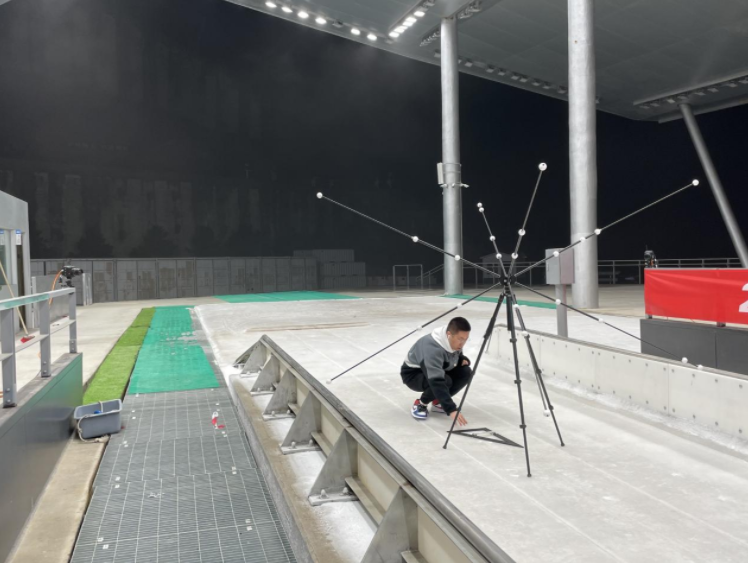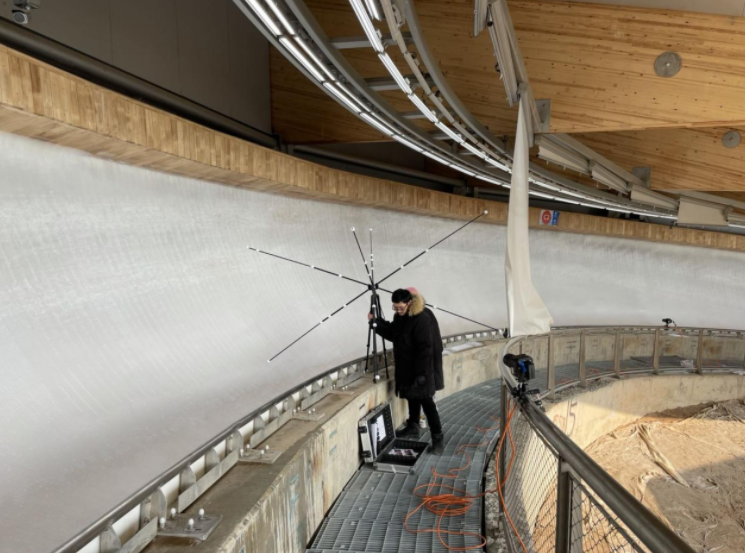China’s Yan Wengang won bronze in the men’s skeleton at the Beijing 2022 Winter Olympic Games on the evening of Feb. 11, which is the country's first-ever medal in the downhill sliding sport. This breakthrough would not have been possible without the support of the Beijing Institute of Technology (BIT).

A team member calibrates the starting section of the track. (Photo courtesy of Beijing Institute of Technology)
The secret lies in a smart training management system for sliders developed by the BIT’s six member team, most of whom were born in the 1990s. The system, which has been applied to the daily training of skeleton athletes, can monitor the parameters of sliders’ three-dimensional posture during the starting section of their runs, as well as the acceleration achieved during the running start and the trajectory at various curves on the track, data that has played a significant role in improving the slider’s overall performance.
Unlike the existing systems developed by other countries, this system is able to monitor the kinematics parameters of sliders during the whole process of their run. “Our system is portable, and offers accurate data on the three-dimensional postures of sliders,” said Huo Bo, professor at the School of Aerospace Engineering of the BIT, who headed the team.
Back in 2018, Huo and his team undertook a key program led by the Ministry of Science and Technology to develop technologies catering to athletes for the Beijing Winter Olympics. Three years later, China’s national skeleton team contacted them to seek support.
“At the outset, we planned to carry out the kinematics analysis of sliders, but later we realized that the analysis of sliders’ movements at the starting section and at curves were also an urgent need,” said Huo. So they decided to build an analysis system covering the whole process of the run and began with initial calibrations. “To calibrate the track, we spent about two days walking along the track while holding calibration rods in our hands,” said Jiang Liang, a PhD student on the team.

A team member calibrates a curve along the track. (Photo courtesy of Beijing Institute of Technology)
The team members all respect the sliders because skeleton is considered one of the most dangerous sports in the Winter Olympics. “A rider may reach a maximum speed of 135 km/h, and experience an acceleration force of up to 4 G when passing through the curves,” Jiang explained.
During the 67 days Huo and his team worked for bobsleigh and skeleton national teams, the team improved the system separately about 10 times, collected 12 terabytes of videos, and with over 100,000 photos recognized and revised by the system. Jiang recalled that all the team members were very happy when the final version of the system was handed over to the national teams for use, especially when their analysis during the starting section of the run gained recognition from the coaches.
“I feel so proud of the Chinese athletes,” said Jiang, adding that the hard work of the team paid off in the end.


